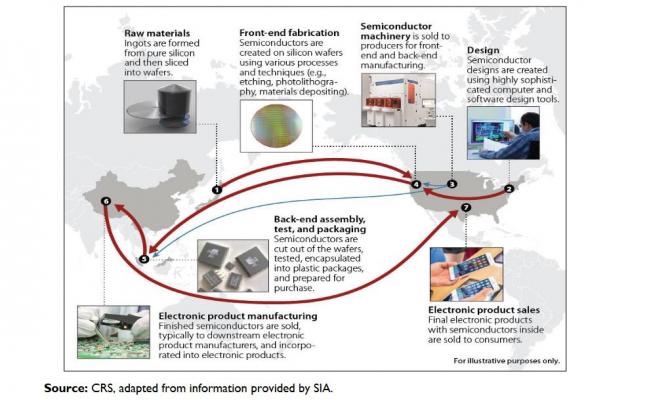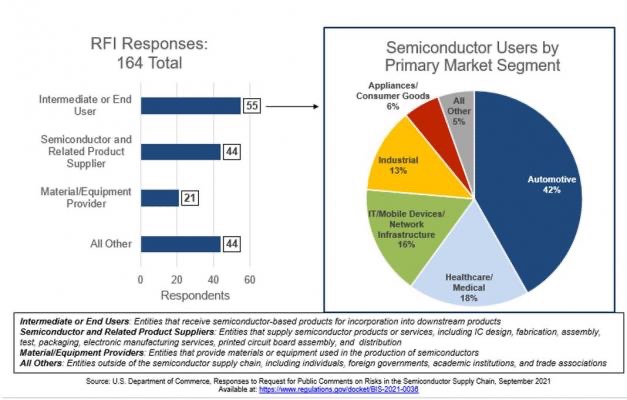

美国商务部:半导体供应链调查结果公布:
-识别缺失的节点-
2022 年 1 月 25 日
美国商务部:
自 2021 年 9 月以来进行的一项半导体供应链调查的结果已经发布。它是
半导体供应链调查结果:
与主要半导体制造商建立供应链中断工作组。
信息请求 (RFI):
2021年9月,美国商务部着手调查半导体短缺的实际情况。
我们要求半导体公司提供供应链信息。
结果,我们收到了 150 家公司的回复,其中包括几乎所有主要的半导体制造商。
商务部调查结果:
供需严重不匹配:
与 2019 年相比,2021 年的半导体需求中值增长了 17%。
半导体买家尚未意识到供应增加以满足需求的增加。
这里存在很大的供需不匹配。
半导体产品库存:
与 2019 年的 40 天相比,2021 年的库存降至不到 5 天。
主要行业的库存甚至更低。
后处理能力不足:
从应诉企业来看,除了工厂产能
材料、组装、测试、包装等
有回复说后处理能力也不够。
——日本EE时代
https://eetimes.itmedia.co.jp/ee/articles/2202/07/news061.html
Results from Semiconductor Supply Chain Request for Information
U.S. Department of Commerce
In September,
the Department of Commerce
launched a Request for Information (or “RFI”) on the semiconductor supply chain that gave new insight into the complex and global semiconductor supply chain.The Department received
more than 150 responses, including from nearly every major semiconductor producer and from companies in multiple consuming industries.Some key findings include:
Median demand for chips highlighted by buyers was as much as 17% higher in 2021 than 2019, and buyers aren’t seeing commensurate increases in the supply they receive. This is a major supply and demand mismatch.
The median inventory of semiconductor products highlighted by buyers has fallen from 40 days in 2019 to less than 5 days in 2021 (see Figure 2).
These inventories are even smaller in key industries.
The RFI allowed us to pinpoint specific nodes where the supply and demand mismatch is most acute,
and we will target our efforts moving forward on collaborating with industry to resolve bottlenecks in these nodes.
The primary bottleneck across the board appears to be wafer production capacity, which requires a longer-term solution.
U.S. Department of Commerce
https://www.commerce.gov/news/blog/2022/01/results-semiconductor-supply-chain-request-information